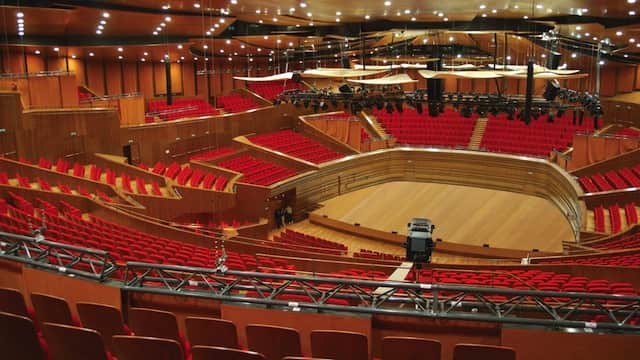
The acoustical properties of wood have been recognized for a long time. Firstly, wood is a resonant material and this resonance is used in the crafting of all kinds of musical instruments and the finishing of concert halls. Secondly, the honeycomb-like structure of wood, composed of microscopic cavities, or pores, absorbs and attenuates sound, which is useful for limiting noise transmission between rooms in a building. This intrinsic quality can be further improved by an appropriate building design.
The unique mechanical and acoustical properties of wood and its aesthetic appeal still make it the material of choice for musical instruments and the interior of concert halls. Worldwide, several hundred wood species are available for making wind, string, or percussion instruments. Over generations, first by trial and error and more recently by scientific approach, the most appropriate species were found for each instrument and application.
Wood is advantageous in its comparative abundance and in being relatively easy to shape with simple tools. One feature that sets wood apart from most manmade materials is that it is an orthotropic material, meaning that it has unique and independent mechanical properties in the directions of three mutually perpendicular axes: longitudinal, radial, and tangential. Wood is a hierarchically structured composite. Many physical and mechanical properties of wood are correlated with density. Wood is a light material, so as such its sound insulation performance is not particularly good. Neither does a thick, dense-surfaced and smooth wooden structure dampen sound particularly well, so wood alone is not a good absorption material. Wood conducts sound better in the longitudinal direction of the grain than perpendicular to it. A dense wooden structure reflects sound, and can easily be made into surfaces that channel sound reflections. Therefore this property is preferred in musical instruments and concert halls.
A sufficient level of sound insulation in wooden buildings can usually be achieved structurally by using multi-layered constructions. By positioning porous absorption material behind the board or panelling in addition to an air gap, for example a layer of thermal insulation, a so-called board resonator is formed which, when it vibrates, effectively dampens low sounds that are problematic for light structures. Furthermore, by making wooden battening or by making holes in wooden surfaces, a perforated resonator can be created that also efficiently dampens medium-to-high-pitched sounds.
In multi-storey wooden buildings, the means of controlling sound insulation (separate frames, sound breaks) are challenging, because they are contrary to how structural rigidity is achieved (reinforcement, joints, continuous structures). The footstep insulation of wooden floors can be improved by increasing the mass of the floor, for example using a concrete cast on the surface or so-called floating surface tiles on top of a flexible layer on the upper surface of the floor.
